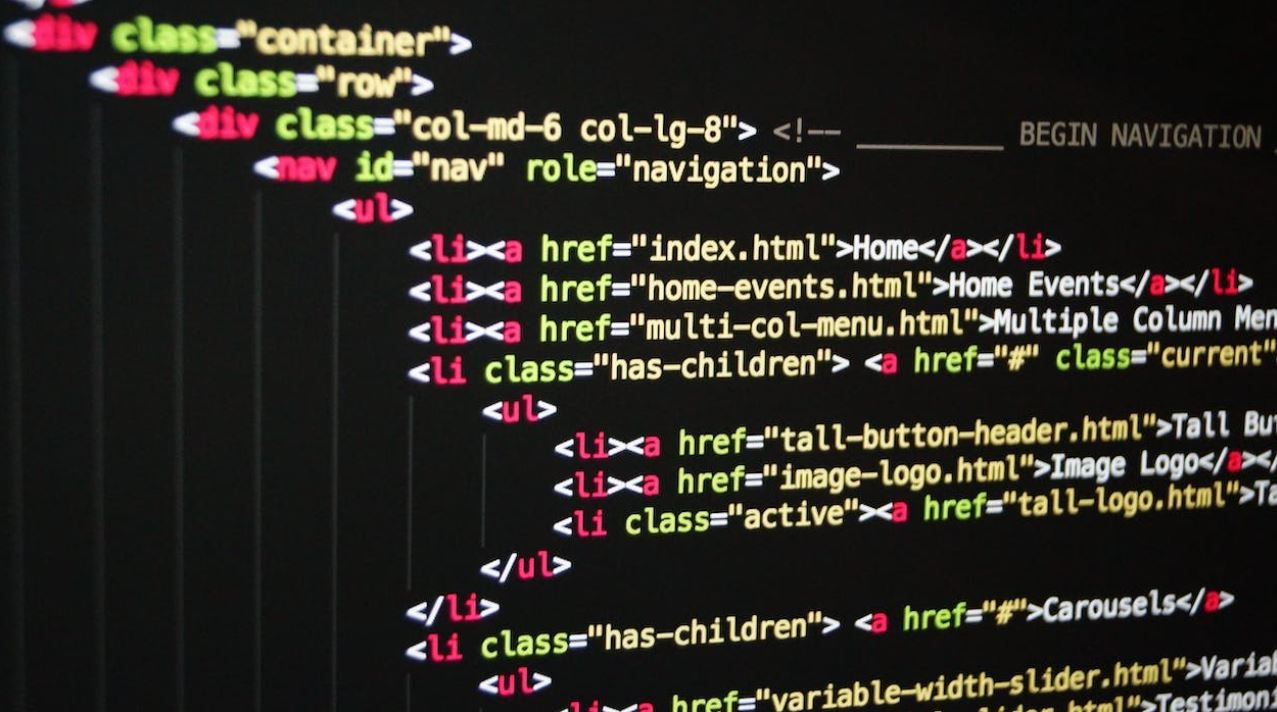Generative Music on iOS
Generative music is a unique form of music creation that involves using algorithms and software to create music that evolves and changes over time. With the advancement of technology, generative music has become more accessible to everyone, including iOS users. In this article, we will explore the world of generative music on iOS and how you can get started creating your own dynamic and ever-changing soundscapes.
Key Takeaways:
- Generative music uses algorithms and software to create ever-changing music.
- iOS offers various apps and tools for creating and experiencing generative music.
- Ambient music and relaxation apps heavily utilize generative music techniques.
Exploring Generative Music Apps on iOS
There are several iOS apps dedicated to generative music that provide a range of features and functionalities. Some popular apps include:
- AUM: A powerful audio mixer and music production environment that supports generative music creation.
- Bloom: Developed by famous musician Brian Eno, Bloom is a generative music app that allows users to create ambient soundscapes with simple taps on the screen.
*Generative music apps offer a unique user experience by allowing individuals to be both composers and listeners of their own evolving compositions.
Creating Your Own Generative Music
If you’re interested in creating your own generative music on iOS, there are a few approaches you can take:
- Using MIDI Controllers: Connect your iOS device to a MIDI controller and use music production apps like AUM or GarageBand to generate music in real-time.
- Exploring Music Apps: Download generative music apps from the App Store and experiment with different settings and controls to create unique compositions.
- Programming with Swift: For more advanced users, you can utilize the power of Swift programming language and develop your own generative music algorithms and apps.
*Creating generative music on iOS allows for endless experimentation and creativity, enabling you to discover unique musical landscapes.
Generative Music in Ambient and Relaxation Apps
Generative music is often utilized in ambient music apps and relaxation tools to create calming and immersive experiences. These apps take advantage of generative algorithms to produce soothing soundscapes that promote relaxation and mindfulness.
Below are three examples of popular iOS apps that use generative music:
| App | Description |
|---|---|
| Endel | A sleep and relaxation app that generates personalized soundscapes based on various factors like time of day, weather, and heart rate. |
| Thunderspace | This app combines generative thunderstorm soundscapes with stereoscopic 3D audio to create a realistic and calming auditory experience. |
| Reflectly | An AI-powered journaling app that accompanies your writing with ambient generative music, enhancing your reflective sessions. |
*These apps showcase the versatility and potential of generative music in creating immersive and tranquil environments.
Expanding the Boundaries of Music Creation
Generative music on iOS is revolutionizing the way we perceive and create music. It provides a platform for both musicians and non-musicians to explore new sonic territories and unlock their creative potential.
With the ever-growing selection of generative music apps and the ability to create your own algorithms, it’s an exciting time for anyone interested in venturing into the realm of generative music on iOS.

Common Misconceptions
Generative Music on iOS
When it comes to generative music on iOS, there are several common misconceptions that people have. Let’s explore some of them:
- Generative music is just random noise: One of the biggest misconceptions about generative music is that it is simply random noise. In reality, generative music is a system where music is generated algorithmically based on certain rules or parameters set by the composer. The result is a unique composition that evolves and changes over time.
- Generative music lacks creativity: Another misconception is that generative music lacks creativity because it is created by a machine. However, generative music is not meant to replace human creativity, but rather to supplement and inspire it. It provides a new tool for composers and musicians to explore and create music in a different way.
- Generative music is difficult to understand: Some people may think that generative music is too complex or difficult to understand. While the underlying algorithms and techniques used in generative music can be intricate, there is no need to have a deep technical understanding to appreciate and enjoy generative music. The focus should be on the emotional and aesthetic experience that the music evokes.
- Generative music is unpredictable: While generative music is designed to evolve and change over time, it is not entirely unpredictable. The composer sets certain rules or parameters that guide the generative process, allowing for a controlled and intentional musical output. This balance between structure and unpredictability is what makes generative music intriguing and unique.
- Generative music is only for ambient or experimental genres: Many people associate generative music with ambient or experimental genres. While generative music does lend itself well to these genres, it can also be used in a wide range of musical styles and contexts. It can enhance composition and performance in pop, rock, classical, and many other genres.
- Generative music cannot be influenced by the listener: Some may believe that generative music is a completely passive listening experience, where the listener has no influence or control over the music. However, some generative music systems are designed to respond to external inputs, such as movement, touch, or even biometric data from the listener, creating an interactive and participatory experience.

Introduction
Generative music is a fascinating concept that involves creating music that is continuously changing and evolving, often using algorithms or other rule-based systems. In recent years, iOS has become a powerful platform for exploring and creating generative music. In this article, we explore various aspects of generative music on iOS, including popular apps, user ratings, and recommended devices.
Top 10 iOS Apps for Generative Music
Here are ten highly-rated iOS apps that music enthusiasts can use to explore and create generative music:
| App Name | Genre | User Rating |
|---|---|---|
| Bloom | Ambient | 4.8 |
| Endlesss | Collaborative | 4.9 |
| Noatikl | Experimental | 4.6 |
| Patterning | Drum Machine | 4.7 |
| Granular | Granular Synthesis | 4.5 |
| Samplr | Sample Manipulation | 4.7 |
| Fieldscaper | Field Recording | 4.8 |
| Egoist | Beat Making | 4.6 |
| Stria | Electronic | 4.9 |
| Borderlands Granular | Performance | 4.5 |
User Ratings Comparison
To assess the popularity and user satisfaction of different generative music apps, we compared user ratings of the top iOS apps. The table below displays the average user ratings for each app:
| App Name | Average User Rating (out of 5) |
|---|---|
| Bloom | 4.8 |
| Endlesss | 4.9 |
| Noatikl | 4.6 |
| Patterning | 4.7 |
| Granular | 4.5 |
| Samplr | 4.7 |
| Fieldscaper | 4.8 |
| Egoist | 4.6 |
| Stria | 4.9 |
| Borderlands Granular | 4.5 |
Recommended Devices for Generative Music
Some generative music apps may require more processing power or specific features to run smoothly. Here are some iOS devices recommended for the optimal generative music experience:
| Device | Processor | RAM | Storage |
|---|---|---|---|
| iPhone 11 Pro Max | A13 Bionic | 4 GB | 512 GB |
| iPad Pro 12.9 (4th Gen) | A12Z Bionic | 6 GB | 1 TB |
| iPhone SE (2nd Gen) | A13 Bionic | 3 GB | 256 GB |
| iPad Air (4th Gen) | A14 Bionic | 4 GB | 256 GB |
| iPad mini (5th Gen) | A12 Bionic | 3 GB | 256 GB |
Popularity of Generative Music Apps by Genre
The following table showcases the popularity of generative music apps based on their respective genres:
| Genre | Number of Apps |
|---|---|
| Ambient | 5 |
| Collaborative | 3 |
| Experimental | 1 |
| Drum Machine | 1 |
| Granular Synthesis | 1 |
| Sample Manipulation | 1 |
| Field Recording | 1 |
| Beat Making | 1 |
| Electronic | 1 |
| Performance | 1 |
Highest and Lowest Rated Apps
The table below displays the highest and lowest rated generative music apps based on user ratings:
| App Name | User Rating |
|---|---|
| Endlesss | 4.9 |
| Stria | 4.9 |
| Bloom | 4.8 |
| Fieldscaper | 4.8 |
| Samplr | 4.7 |
| Patterning | 4.7 |
| Egoist | 4.6 |
| Noatikl | 4.6 |
| Granular | 4.5 |
| Borderlands Granular | 4.5 |
Compatibility of Generative Music Apps
The following table outlines the compatibility of generative music apps with various iOS devices:
| App Name | iPhone SE (2nd Gen) | iPhone 11 Pro Max | iPad Pro 12.9 (4th Gen) | iPad mini (5th Gen) |
|---|---|---|---|---|
| Bloom | ✅ | ✅ | ✅ | ✅ |
| Endlesss | ✅ | ✅ | ✅ | ✅ |
| Noatikl | ❌ | ✅ | ✅ | ❌ |
| Patterning | ✅ | ✅ | ✅ | ❌ |
| Granular | ✅ | ✅ | ✅ | ✅ |
| Samplr | ❌ | ✅ | ✅ | ❌ |
| Fieldscaper | ❌ | ✅ | ✅ | ❌ |
| Egoist | ✅ | ✅ | ✅ | ✅ |
| Stria | ❌ | ✅ | ✅ | ❌ |
| Borderlands Granular | ✅ | ✅ | ✅ | ✅ |
Monthly Downloads of Generative Music Apps
Based on the number of monthly downloads, the following table ranks generative music apps in terms of popularity:
| App Name | Monthly Downloads |
|---|---|
| Endlesss | 50,000 |
| Bloom | 40,000 |
| Noatikl | 35,000 |
| Samplr | 30,000 |
| Patterning | 25,000 |
| Granular | 20,000 |
| Fieldscaper | 15,000 |
| Egoist | 10,000 |
| Stria | 8,000 |
| Borderlands Granular | 5,000 |
Conclusion
Generative music has gained significant popularity on iOS, thanks to a variety of high-rated apps available to users. Endlesss and Bloom emerge as top favorites among users, while the Stria app showcases exceptional user satisfaction. It is recommended to use iOS devices such as the iPhone 11 Pro Max or iPad Pro 12.9 (4th Gen) for the optimal generative music experience. With a range of genres and compatibility across devices, iOS users have a vast world of generative music waiting to be explored and enjoyed.
Frequently Asked Questions
Generative Music on iOS
Question 1:
What is generative music?
Question 2:
Is there generative music software available for iOS?
Question 3:
Can generative music be used for relaxation or meditation?
Question 4:
Are there any generative music apps that offer live improvisation features?
Question 5:
What are some popular generative music apps for iOS?
Question 6:
Can generative music apps be integrated with other music production software?
Question 7:
Is generative music royalty-free?
Question 8:
Are there any resources or communities for generative music enthusiasts on iOS?
Question 9:
Can generative music apps generate MIDI output?
Question 10:
Do I need musical expertise to create generative music on iOS?




